Pastor Ed Lapiz Day by Day Ministries Cultural Redemption





Laden with heavy bags we still had to climb a steep mountain and negotiate every vine and shrub that blocked our way until we finally reached the hut at the peak of the mountain.
No electricity, no radio, no newspaper, not even a cell phone signal! I won’t be able to use the cell phone I borrowed from my mom. I had a hard time catching my breath after that walk that must have taken forever; but all that agony was dispelled when I realized I was standing on top of a mountain.
My spirit longed to scream: I’m at the top of the world!
Honestly, I never knew what I was there for. I wasn’t as prepared as my other KALOOB ates and kuyas. I had no inkling what to expect. All I had in mind was a vacation of sorts away from the city, excited about the prospects of staying with a tribal community and sleeping in a hut overlooking a ravine. It was just a simple nature trip for me at first, rather than a cultural research.
Then work began. We started each day with a 30-minute warm-up followed by sessions where we learned the cultural backgrounds of each Cordillera group. Our instructors from the tribes of the Ifugao, Kalinga, Itneg/Tingguian, Bontoc, and Ibaloi/ Kankana-ey had prepared a day-long module consisting of dances and insights of their culture and art.
Our trainers were surprised to see how quickly we were able to follow their lead, even comparing us with previous students who had taken almost a week to learn one dance. They said that we were such fast learners that they had almost run out of modules to teach. That meant we had longer time for R & R and to enjoy the beauty of the peak. We even had the chance to visit neighbors from the nearby mountain.
I remember one night when we had fellowship with our trainers. We shared with them what KALOOB has been doing and why we were so eager to learn their culture. We told them how God intercedes each time we try to learn or do research. God knows what is in our hearts and so He makes it possible for us to quickly absorb everything shared with us.
That was the moment of my epiphany with KALOOB. I realized then that KALOOB was my family and it still is. KALOOB is a blessed ministry. God has anointed this group with a gift… ipinagkaloob (specially given). And I am blessed to have personally experienced God’s revelation through the works and researches of KALOOB. To this moment, I have devoted full time work as one of KALOOB’s researchers… and I look forward to sharing more of my lifetime documenting, preserving and learning more of the rich and beautiful gifts God has given to my people.
The Tinikling is the most famous among Philippine dances. The dance requires much skill and agility as dancers step and turn between rapidly clashing bamboo poles. It is performed by Kaloob to demonstrate the snares of sin and the way to avoid entrapment.
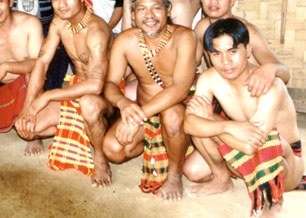
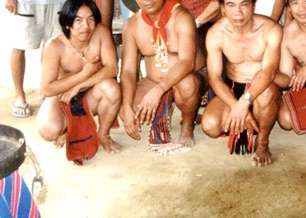
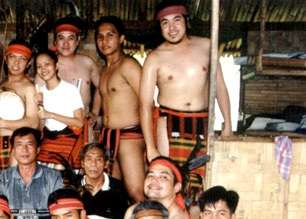
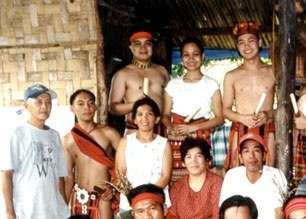

By Connery C. Martinez
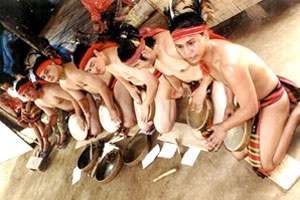

I was excited as I was packing my stuff for my first major research with KALOOB. It was a long trip from Manila to Baguio, then from Baguio to Tuba, Benguet. When we got to the foot of the mountain (Twin Peaks), I thought it was the end of the journey. But I was wrong!!!

Kaloob researchers are difficult to identify as they are also in local attire, in a research mission in Benguet in 2002.
Pastor Ed Lapiz Day by Day Ministries Cultural Redemption









While the insignia of KALOOB can be taken as a graphic representation of a person dancing, it is actually an ancient Tagalog script for the syllable “KA”. The point above it gives it the form of a dancing person. In the Filipino language, “KA” connotes a sharing that promotes oneness. KALOOB uses dance to promote a unified understanding of a diverse culture. Integral to the mission and vision is the establishment of a true Filipino identity that is defined by a solid cultural heritage.









